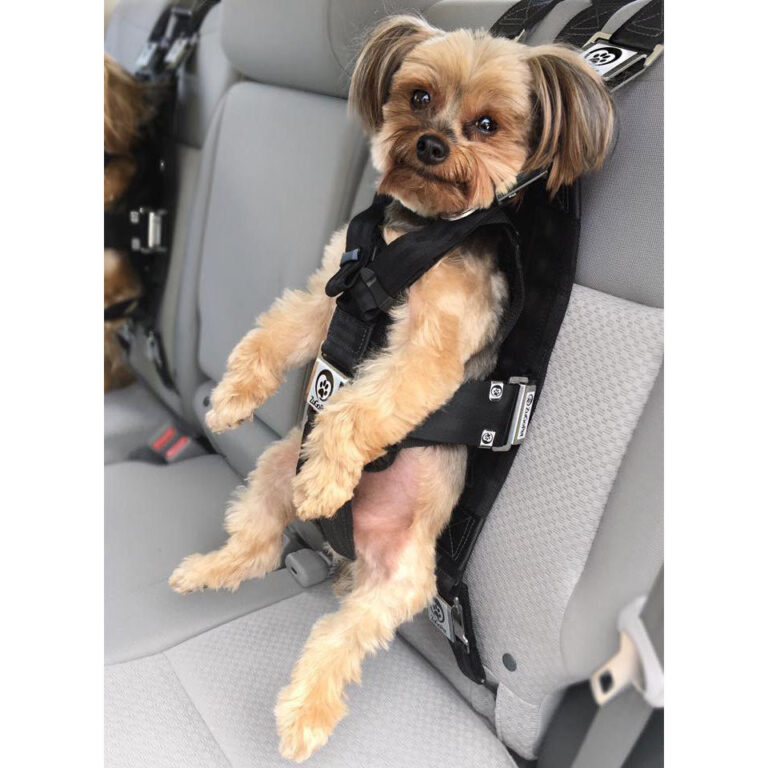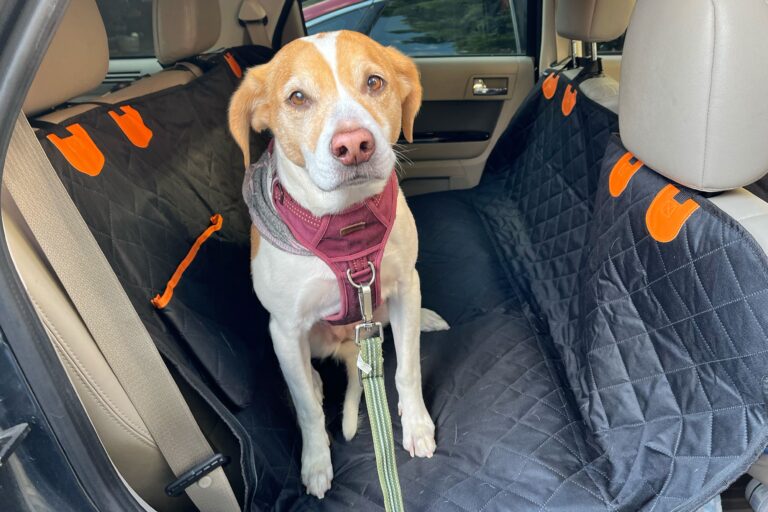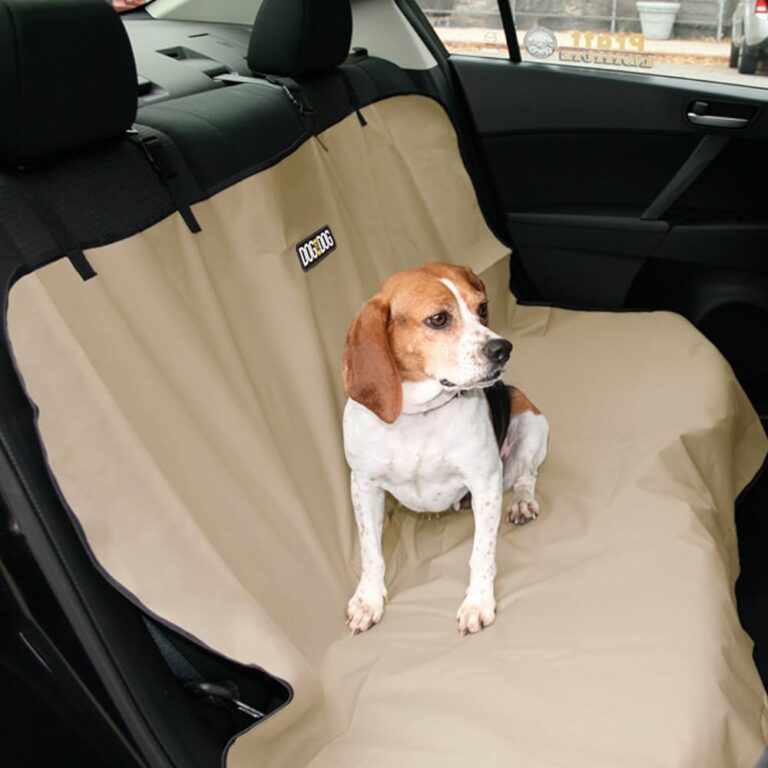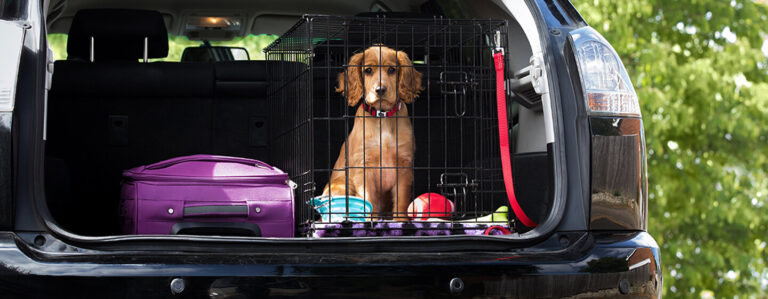Can You Use a Regular Dog Harness in the Car? Safety Tips
You should not use a regular dog harness in the car. Regular dog harnesses lack the safety features needed for car travel.
Ensuring your dog’s safety during car rides is crucial. Regular dog harnesses are designed for walking and may not withstand the forces in a car accident. Car-specific dog harnesses have been crash-tested for this purpose. They secure your pet, minimizing injury risks.
Using a car harness keeps your dog safe and prevents distractions while driving. Many car harnesses attach to your vehicle’s seatbelt system, providing a snug fit. Investing in a proper car harness can give you peace of mind. It’s an essential step for responsible pet ownership. Always prioritize your dog’s safety during travel.
Introduction To Canine Car Safety
Keeping your dog safe while traveling in a car is crucial. Many pet owners overlook this aspect of pet care. Yet, ensuring your dog’s safety can prevent injuries and save lives. This section covers the importance of car safety for dogs and the differences between regular harnesses and car harnesses.
Why Car Safety Is Important For Dogs
Dogs are family members, and their safety matters. Just like humans, dogs can get hurt in car accidents. A sudden stop can throw your dog forward. This can cause serious injuries. Using a proper car harness can keep your dog secure. It can also prevent distractions while driving.
Here are some reasons why car safety is vital for dogs:
- Prevents Injuries: A secured dog is less likely to get injured in a crash.
- Reduces Driver Distractions: A roaming dog can distract the driver, increasing the risk of an accident.
- Legal Requirements: Some places have laws requiring pets to be restrained in vehicles.
Differences Between Regular And Car Harnesses
Not all harnesses are created equal. Regular harnesses and car harnesses serve different purposes. Understanding these differences can help you choose the best option for your dog’s safety.
| Feature | Regular Harness | Car Harness |
|---|---|---|
| Purpose | Used for walking and leash control | Designed to secure dogs in cars |
| Material | Lightweight and flexible | Reinforced for durability and safety |
| Attachment Points | Leash attachment on the back | Straps for seatbelt attachment |
| Safety Tests | Rarely crash-tested | Often crash-tested for safety |
Regular harnesses may not withstand the forces of a crash. Car harnesses are designed to protect your dog in an accident. They have stronger materials and secure attachments.
Choosing the right harness can make a big difference. Always prioritize your dog’s safety in the car.
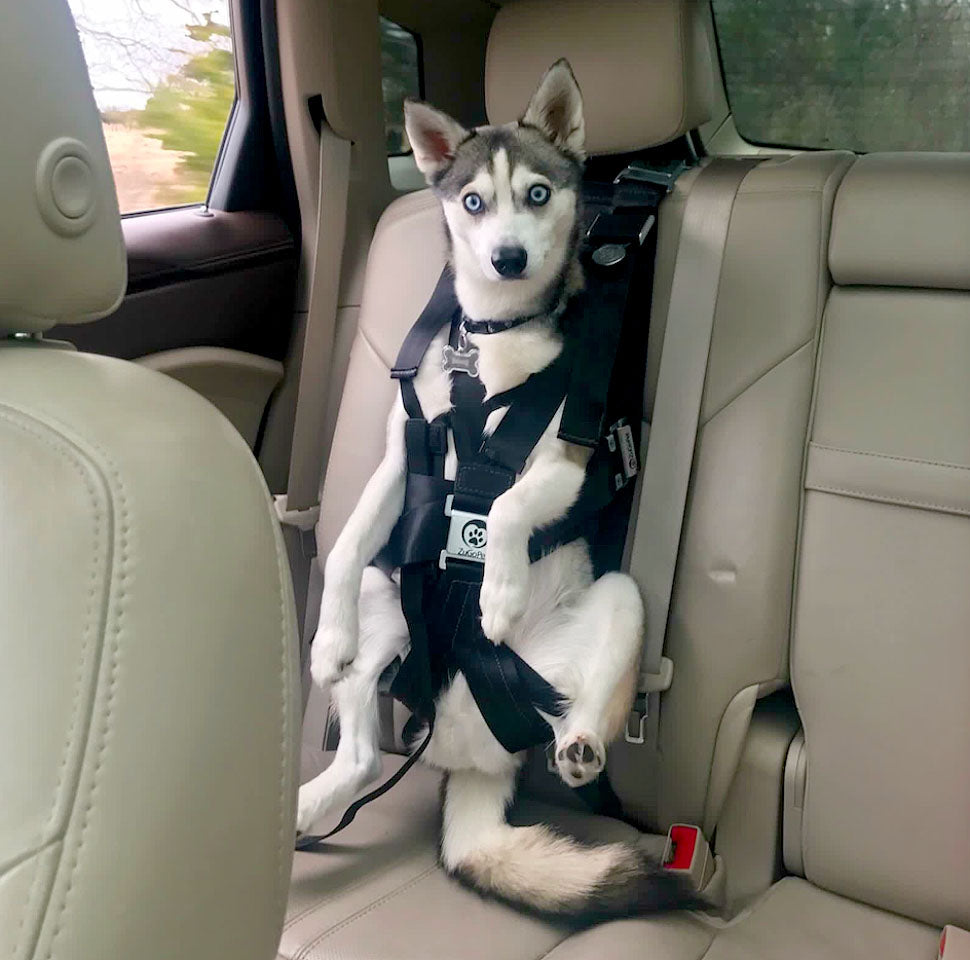
Credit: zugopet.com
Regular Dog Harnesses Vs. Car Harnesses
Many pet owners use regular dog harnesses for daily walks. But can these harnesses be used in cars? Understanding the differences between regular dog harnesses and car harnesses is important for your pet’s safety.
Design And Material Variations
Regular dog harnesses are designed for walking and general use. They often have a simple design with basic materials.
Car harnesses, on the other hand, are specifically designed for car travel. They are usually made with stronger materials. This ensures they can withstand the forces of sudden stops.
| Feature | Regular Dog Harness | Car Harness |
|---|---|---|
| Material | Nylon, polyester | High-strength nylon, metal buckles |
| Design | Basic straps | Padded, reinforced straps |
| Purpose | Walking, training | Car travel, safety |
Assessing The Safety Features
Regular dog harnesses lack features specifically for car safety. They are not tested for crash safety.
Car harnesses come with special safety features. These include crash-tested buckles and padded straps. They are designed to keep your dog secure during travel.
- Crash-tested buckles: Ensure harness stays in place during accidents.
- Padded straps: Provide comfort and reduce injury risk.
- Reinforced stitching: Adds durability and strength.
Using a car harness ensures your dog stays safe and secure in the car.
The Risks Of Using A Regular Harness
Using a regular dog harness in the car might seem convenient. But it carries significant risks. Let’s explore the potential dangers associated with this practice.
Potential For Injury During Collisions
A regular harness is not designed for car travel. During a collision, your dog can suffer serious injuries. The harness may not restrain your pet effectively. This can lead to your dog being thrown around the car.
In a severe accident, your dog could even be ejected from the vehicle. This puts not only your dog at risk but also the passengers. Unrestrained pets can become projectiles during a crash. This increases the risk of injury for everyone in the car.
Here is a quick comparison table:
| Regular Harness | Car-Specific Harness |
|---|---|
| Not designed for crash safety | Tested for crash safety |
| High risk of injury in a collision | Minimized risk of injury |
| May not restrain the dog effectively | Provides secure restraint |
Lack Of Crash Testing
Regular dog harnesses are not subject to crash testing. They are meant for walking and general control. Without crash testing, there is no guarantee that the harness will protect your pet in an accident.
Car-specific harnesses, on the other hand, undergo rigorous testing. These tests ensure that the harness can withstand the forces of a collision. They are designed to keep your dog secure and safe.
Here are some key points:
- Regular harnesses lack crash testing standards
- Car-specific harnesses meet safety regulations
- Regular harnesses may fail during a crash
- Car-specific harnesses are built to protect
Choosing a car-specific harness is a safer option for traveling with your pet.
Selecting The Right Car Harness
Choosing the right car harness for your dog is crucial for their safety. A regular dog harness may not provide the protection needed during a car ride. This is where a specialized car harness comes in. It offers features specifically designed for travel.
Key Features To Look For
When selecting a car harness, look for these key features:
- Crash-Tested: Ensure the harness has been crash-tested for safety.
- Durable Materials: The harness should be made of strong, durable materials.
- Comfort: Look for padding that provides extra comfort for your dog.
- Adjustable Straps: Adjustable straps help fit the harness to your dog’s body.
- Easy to Use: The harness should be easy to put on and take off.
Recommended Car Harness Brands
Here are some top brands known for their reliable car harnesses:
| Brand | Key Features |
|---|---|
| Sleepypod Clickit Sport | Crash-tested, padded vest, three-point design |
| Kurgo Tru-Fit Smart Harness | Crash-tested, five adjustment points, steel hardware |
| Ruffwear Load Up Harness | Crash-tested, durable materials, easy to put on |
Choosing a car harness from these brands ensures safety and comfort for your dog during car rides. Always prioritize your dog’s safety by investing in a high-quality car harness.
Proper Fitting And Usage
Using a regular dog harness in the car can be safe. Proper fitting and usage are essential. A well-fitted harness ensures your dog’s comfort and security during car rides. This section covers the key aspects of fitting and using a dog harness in a vehicle.
Adjusting For Size And Comfort
Ensuring the right size is crucial for your dog’s comfort. Measure your dog’s chest and neck. Use a tape measure for accuracy. Check the manufacturer’s size chart. Choose the size that fits best.
Adjust the harness to fit snugly. It should not be too tight or too loose. You should be able to fit two fingers between the harness and your dog. This ensures the harness is comfortable and secure.
Check for padding. Some harnesses come with padding. Padding adds extra comfort. It prevents chafing and irritation. Make sure the padded areas sit correctly on your dog’s body.
Securing Your Dog Safely In The Vehicle
Attach the harness to the car’s seat belt. Most harnesses have a loop or clip for this purpose. Thread the seat belt through the loop. Buckle the seat belt securely.
Use a tether if available. Some harnesses come with a tether. The tether attaches to the car seat belt. It provides extra security. Ensure the tether is short enough to prevent your dog from moving around too much.
Position your dog correctly. Your dog should sit or lie down. The harness should keep your dog in place. This prevents distractions while driving.
Check the harness regularly. Make sure it is still secure and comfortable. Adjust it if necessary. Regular checks ensure ongoing safety and comfort.
| Step | Action |
|---|---|
| 1 | Measure your dog’s chest and neck. |
| 2 | Choose the correct harness size. |
| 3 | Adjust the harness for a snug fit. |
| 4 | Ensure padding is in the right places. |
| 5 | Attach the harness to the seat belt. |
| 6 | Use a tether for extra security. |
| 7 | Position your dog correctly in the car. |
| 8 | Regularly check the harness. |
Safety Tests And Certifications
Many dog owners wonder if they can use a regular dog harness in the car. Safety is a top priority when traveling with pets. Understanding how dog harnesses are tested and certified is crucial. This section explains the importance of crash test standards and recognized safety certifications.
Understanding Crash Test Standards
Crash test standards ensure that dog harnesses can protect pets in accidents. These tests simulate real-world crash scenarios. They check if the harness can keep a dog secure and reduce injury risk.
Crash tests involve attaching a harness to a dummy dog. The dummy is placed in a car seat and subjected to crash forces. Experts then analyze the results to ensure safety.
Key points about crash tests:
- They simulate car accidents.
- They use dummy dogs to test the harness.
- They help identify safe and unsafe harnesses.
Recognized Safety Certifications For Dog Harnesses
Not all dog harnesses are created equal. Some have passed rigorous safety tests and earned certifications. These certifications indicate a harness has met high safety standards.
Recognized safety certifications include:
| Certification | Details |
|---|---|
| Center for Pet Safety (CPS) | Independent organization that tests and certifies pet safety products. |
| FMVSS 213 | Federal Motor Vehicle Safety Standard for child restraints, adapted for pets. |
Important certifications give peace of mind. They ensure that a harness will perform well in an accident.
Look for certified harnesses for the best protection. Certified harnesses have passed stringent tests and are safer for your pet.
Training Your Dog For Car Harnesses
Training your dog for car harnesses is essential for safety. It helps your pet feel comfortable during car rides. Follow these steps to ensure a smooth transition.
Acclimatizing Your Dog To A Car Harness
Acclimatizing your dog to a car harness involves gradual steps. Start by introducing the harness indoors.
Lay the harness on the ground and allow your dog to sniff it. Reward them with treats and praise. This creates a positive association.
Next, gently put the harness on your dog. Keep the sessions short and positive. Gradually increase the time your dog wears the harness.
Once your dog is comfortable wearing the harness indoors, move to the car. Allow your dog to explore the car while wearing the harness.
Attach the harness to the car seatbelt. Let your dog sit in the car for a few minutes. Reward them with treats and praise.
Positive Reinforcement Techniques
Positive reinforcement techniques are effective in training your dog for a car harness. Use treats, praise, and toys.
- Treats: Offer small, tasty treats when your dog interacts with the harness.
- Praise: Use a happy, encouraging tone when your dog wears the harness.
- Toys: Allow your dog to play with their favorite toy while wearing the harness.
Create a positive experience by combining these elements. Your dog will associate the harness with good things.
Consistency is key. Practice these steps daily until your dog feels at ease in the car harness.
Training your dog for a car harness ensures their safety and comfort. Start today and enjoy stress-free car rides with your furry friend!

Credit: www.madaboutadog.com
Additional Safety Tips
When using a regular dog harness in the car, safety is paramount. Ensuring your pet’s well-being during travel involves more than just securing them with a harness. Here are some additional safety tips to consider for a safer journey with your furry friend.
Avoiding Distractions While Driving
Distractions can be dangerous for both you and your pet. To ensure a safe drive:
- Keep your dog calm: Use toys or treats to keep them entertained.
- Secure your pet: Attach the harness to a seatbelt to prevent them from moving around.
- Use a barrier: Consider using a pet barrier to separate the front and back seats.
Regular Maintenance And Inspection Of Harnesses
Regularly inspecting and maintaining your dog’s harness ensures its effectiveness and longevity. Follow these tips:
| Task | Frequency |
|---|---|
| Check for wear and tear: Inspect for frayed edges and broken buckles. | Weekly |
| Clean the harness: Wash the harness to remove dirt and odors. | Monthly |
| Test the fit: Ensure the harness fits snugly but comfortably. | Bi-weekly |
By following these additional safety tips, you can enjoy a secure and stress-free car ride with your dog.
Legal Considerations And Regulations
Using a regular dog harness in the car can raise several legal concerns. Understanding these can help ensure your pet’s safety and avoid potential fines. This section will discuss the legal considerations and regulations regarding pet transport.
State Laws Regarding Pet Transport
Different states have different laws regarding pet transport. Some states require pets to be restrained while in a moving vehicle.
| State | Law |
|---|---|
| California | Pets must be restrained in a moving vehicle. |
| New Jersey | Pets must be in a carrier or wear a harness. |
| Connecticut | Pets must be restrained in the front seat. |
Be aware of your state’s specific laws to avoid penalties.
Liability In Case Of An Accident
If your pet is not properly restrained, it can lead to serious injuries. Unrestrained pets can also cause distractions, leading to accidents.
Insurance companies may not cover damages if your pet is not secured. In some cases, you could be held legally responsible for injuries caused by your pet.
Using a proper pet harness can help ensure safety and avoid legal issues.
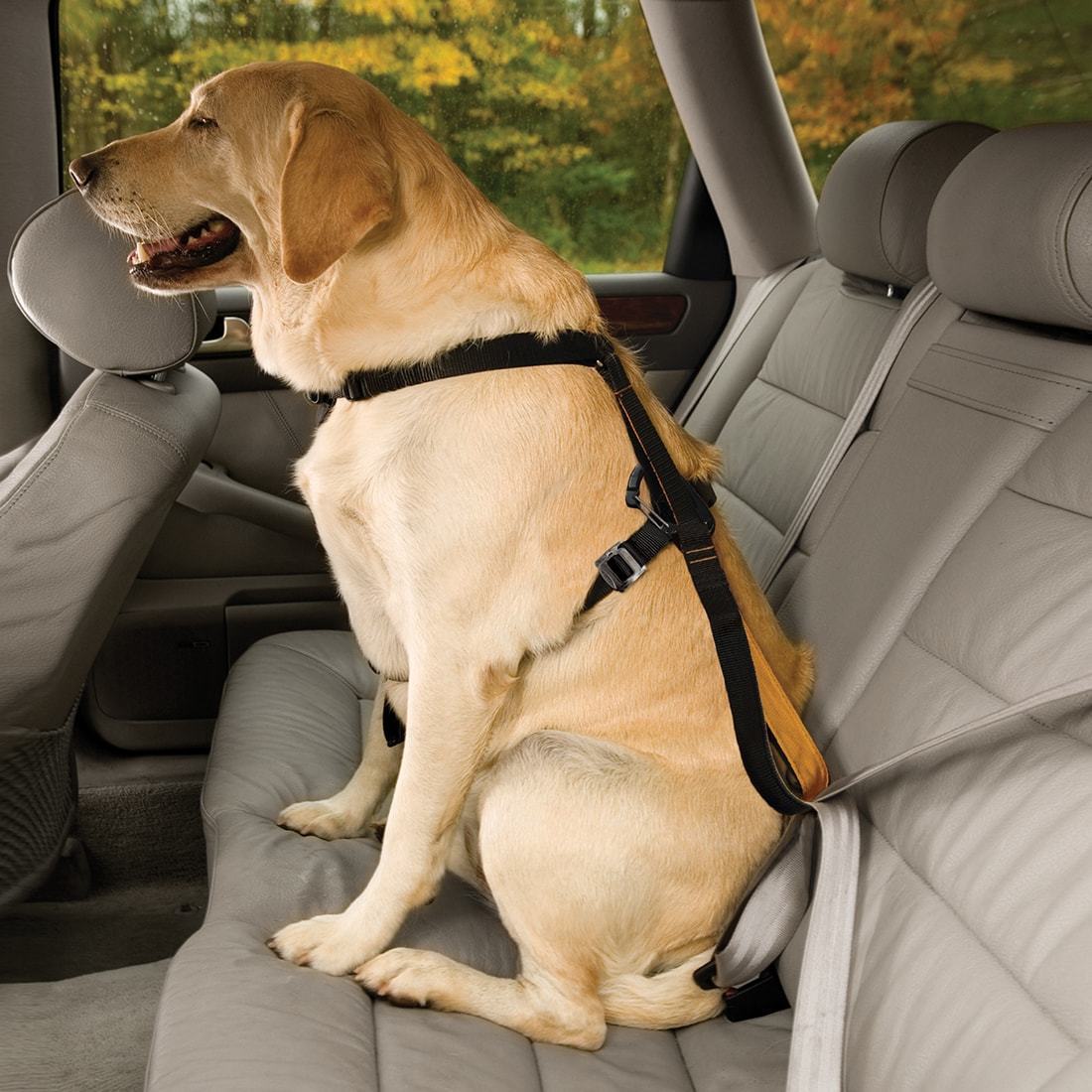
Credit: www.twosaltydogs.net
Frequently Asked Questions
Can I Use My Dog’s Harness With A Seatbelt?
Yes, you can use your dog’s harness with a seatbelt. Ensure the harness is crash-tested and properly secured.
What Is The Safest Way To Harness A Dog In The Car?
Use a crash-tested dog harness for safety. Secure the harness to the car’s seat belt system. Ensure the harness fits snugly. Avoid attaching the harness to the dog’s collar. Place your dog in the back seat for added protection.
In What States Is It Illegal To Have An Unrestrained Dog In A Car?
Several states have laws against unrestrained dogs in cars, including Maine, Connecticut, New Hampshire, and Rhode Island. Ensure your pet’s safety.
Do You Need A Dog Harness In The Car?
Yes, using a dog harness in the car is essential for safety. It prevents injuries during sudden stops or accidents.
Conclusion
Using a regular dog harness in the car can be risky. Prioritize your pet’s safety with a crash-tested car harness. Ensure a comfortable and secure ride for your furry friend. A proper car harness protects both your dog and passengers.
Invest in a specialized car harness for peace of mind.
- Can I Get in a Taxi Without a Car Seat? - January 26, 2025
- Can I Get Chlamydia From a Toilet Seat? - January 26, 2025
- Can I Get an Uber With a Car Seat? - January 26, 2025

